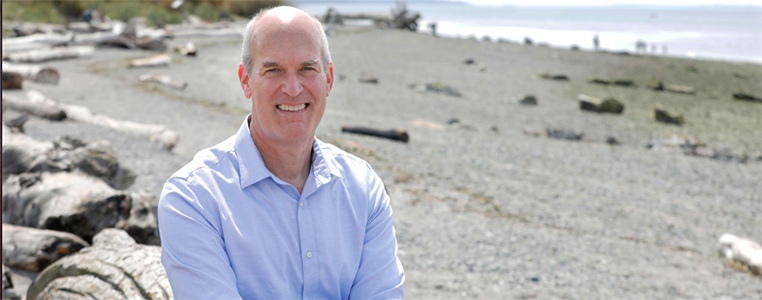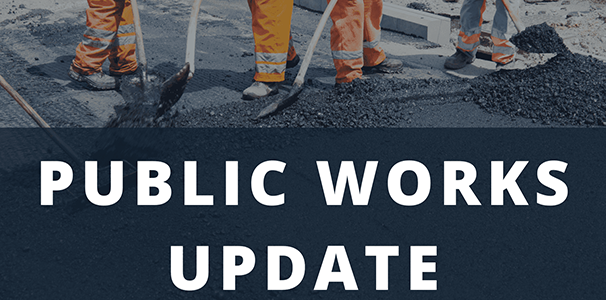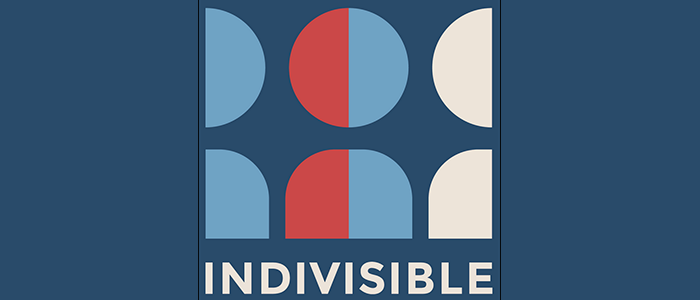||| FROM THE OFFICE OF REP. RICK LARSEN |||
WASHINGTON, D.C. – Today, Reps. Rick Larsen (WA-02) and Annie Kuster (NH-02) introduced the Closing the Substance Use Care Gap Act to expand access to lifesaving, community-based harm reduction initiatives and services and enhance the federal response to the opioid and fentanyl epidemic.
“The opioid crisis is devastating Northwest Washington. This bill helps close the gap between members of our community who want treatment for substance use disorder and those who actually receive it,” said Larsen. “Congress must stay focused on breaking down barriers to effective community-based solutions that meet people where they are, prevent overdoses and save lives.”
“At a time when overdose deaths are finally falling in New Hampshire and across the country, it’s essential we keep our foot on the gas pedal and use every tool at our disposal to help save lives,” said Kuster. “I’m pleased to help introduce legislation that bolsters access to community-based harm reduction services, overdose reversal medications, and medication-assisted treatments so that we connect more communities with the treatment and recovery services they need to heal and recover.”
What Does the Bill Do?
The Closing the Substance Use Care Gap Act would provide community-based organizations with more resources to administer life-saving harm reduction programs and services to people struggling with substance use. The bill would provide grant funding to support low-barrier health care options like naloxone (an overdose reversal medication), fentanyl test strips and low-threshold buprenorphine initiation to treat addiction. It would also provide funding to organizations to establish procedures and mechanisms for connecting individuals with evidence-based treatment and recovery support services.
The U.S. Department of Health and Human Services (HHS) identifies harm reduction as a key pillar of its Overdose Prevention Strategy, and the White House National Drug Control Strategy argues harm reduction is vital for providing resources to people at the highest risk of overdose or poor health outcomes. Despite the demand and effectiveness of harm reduction services, they remain substantially underfunded at the state and federal level.
For a fact sheet on the bill, click here.
What Stakeholders Are Saying About the Bill
Representatives from stakeholder organizations emphasized the importance of the Closing the Substance Use Care Gap Act to combat the opioid epidemic.
National
National Association of EMS Physicians President José Cabañas, MD, MPH, FAEMS:
“EMS clinicians and medical directors are on the front lines of the opioid crisis in our country, caring for our most vulnerable patients and responding to the urgent needs of our communities. There is an ongoing need for federal support to enhance harm reduction programs and to ensure early access to addiction treatment for those suffering from substance use disorders. This bill is a vital step forward in addressing these issues, and NAEMSP fully advocates for federal support as we work together to combat this crisis.”
National Rural Health Association Chief Executive Officer Alan Morgan:
“The National Rural Health Association (NRHA) endorses the Closing the Substance Use Care Gap Act, which reauthorizes and expands SAMHSA’s Harm Reduction Grant Program to support harm reduction services and opioid treatment programs. Access to proven treatments, including medications for opioid use disorder (OUD), is required to reduce opioid-related fatalities. However, rural communities face significant barriers to treatment, with 72% lacking a buprenorphine provider and over 90% without an opioid treatment program. NRHA supports Representatives Larsen and Kuster’s steps to improving outcomes for rural Americans living with OUD.”
National Alliance on Mental Illness (NAMI) Chief Advocacy Officer Hannah Wesolowski:
“As we work towards overcoming the opioid epidemic in our country, we must ensure communities have all the resources they need to support people who are impacted. NAMI thanks Reps. Larsen and Kuster for introducing the Closing the Substance Use Care Gap Act to help ensure communities have vital lifesaving harm reduction resources. NAMI is proud to support the Closing the Opioid Treatment Gap Act to turn the tide on our nation’s opioid crisis.”
American Nurses Association President Jennifer Mensik Kennedy, PhD, MBA, RN, NEA-BC, FAAN:
“Nurses care for patients impacted by substance use disorders every day and see firsthand how essential harm reduction programs are—not only saving lives but creating pathways to treatment and recovery for those not yet ready to stop using. The American Nurses Association (ANA) stands in support of the Closing the Substance Use Care Gap Act. This legislation supports and expands access to critical programs and services—ensuring nurses specializing in substance use disorder treatment can bridge the treatment gap and connect individuals battling substance use disorders to needed care, especially for those in rural and underserved communities. ANA commends Representatives Larsen and Kuster for introducing this important bill and urges Congress to pass it swiftly.”
American College of Physicians President Isaac O. Opole, MBChB, PHD, MACP:
“The American College of Physicians supports evidence-based harm reduction strategies. These measures have been shown to prevent overdose, reduce transmission of infectious diseases, encourage safe use protocols, and save lives. As physicians, we see patients every day experiencing significant health issues due to substance use disorder. Expanded federal funding for harm reduction strategies, as proposed in the Closing the Substance Use Care Gap Act, could greatly help to improve the health and safety of those patients.”
Association of American Medical Colleges Chief Public Policy Officer Danielle Turnipseed, JD, MHSA, MPP:
“Evidence-based harm reduction strategies, such as overdose prevention programs, play an important role in preventing deaths, reducing spread of infectious diseases, and connecting people to treatment. While no single intervention on its own will fully resolve the challenges that individuals with substance use disorders face in accessing treatment, Rep. Rick Larsen and Rep. Annie Kuster’s bill would take an important step forward to continue and enhance SAMHSA’s support for harm reduction work across the country.”
This legislation is also supported by the American Society of Addiction Medicine, National Council for Mental Wellbeing and the Overdose Prevention Initiative at Global Health Advocacy Incubator (GHAI).
Local
Snohomish County Executive Dave Somers:
“Washington is fortunate to have Representative Larsen working at the federal level to combat the opioid epidemic and ensure federal resources are being delivered where they are most needed. I support the Closing the Substance Use Care Gap Act because it is a powerful tool to help fund key components of Snohomish County’s life-saving efforts, including Medication-Assisted Treatment (MAT), overdose reversal medication, and addiction prevention.”
Whatcom County Health and Community Services Health Officer Dr. Amy Harley:
“Access to federal grant funding for harm reduction services is essential for our community’s health. In Whatcom County the opioid overdose death rate is 5 times higher than 5 years ago. Programs that provide harm reduction services are a critical part of our comprehensive response to the overdose crisis. In our county, these programs provide overdose prevention education and opioid overdose reversal medications, as well as health screenings, supplies, and referrals – we help individuals avoid life-altering infections and get connected to care. Through Whatcom County’s Safety and Support program, we’ve distributed thousands of doses of life-saving opioid overdose reversal medications in the past year. These services are vital engagement points on the path to recovery, fostering community and increasing hope and resilience. Restoring funding opportunities through the Closing the Substance Use Care Gap Act will ensure the stability of these vital programs, and is especially important given current resource limitations at the local level and the severity of the crisis.”
San Juan County Council and the San Juan County Board of Health:
“The San Juan County Council and the San Juan County Board of Health are grateful to Representative Larsen for introducing the Closing the Substance Use Care Gap Act. Like every other County in America, we feel the effects of the opioid crisis in the damage it does to our communities and in the loss of precious lives, including those of our children. We support Harm Reduction as a scientifically sound public health strategy and a vital tool in helping people struggling with Substance Use Disorder stay alive to start on the road to recovery.”
The Board of Island County Commissioners:
“The Board of Island County Commissioners endorses Representative Larsen’s legislation, Closing the Substance Use Care Gap Act, which will benefit our citizens affected by the opioid epidemic by expanding their access to harm reduction programs and services. We ask Congress to pass this legislation.”
Sound Pathways Executive Director Shannon Goforth:
“At Sound Pathways, we believe that harm reduction is crucial for connecting individuals with the services they need, empowering them to make informed, autonomous choices regarding drug use, mental health and recovery. Increasing grant access to support these services would bolster our capacity to improve the care we currently offer.”
Washington State Medical Association President John Bramhall, MD, PhD:
“The Washington State Medical Association (WSMA), representing physicians practicing in every specialty and corner of the state, applauds Congressman Rick Larsen’s introduction of the Closing the Substance Use Care Gap Act. The WSMA supports policies that facilitate and improve access to evidence-based harm reduction efforts. This measure will save lives by directly engaging with people who use drugs to prevent overdoses and infectious disease transmission while establishing connections for ongoing care and treatment.”
Washington State Hospital Association CEO Cassie Sauer:
“The Closing the Substance Use Care Gap Act is a critical step towards ensuring that people struggling with substance use have access to the care and support they need. Harm reduction is a proven strategy to prevent overdoses and life-threatening infections. This bill will help patients across Washington access evidence-based treatment and recovery support services. The Washington State Hospital Association applauds Congressman Larsen’s leadership on this issue.”
Washington State Association of Counties Interim Executive Director Derek Young:
“Counties are on the front line in the opioid epidemic. Our members know that strong federal partners are essential to closing the treatment gap and saving lives. We’re grateful for Representative Larsen championing these efforts.”
University of Washington’s Harm Reduction Research and Treatment (HaRRT) Center Co-Directors Susan Collins, PhD, and Seema Clifasefi, PhD, LICSW:
“The Closing the Substance Use Care Gap Act will ensure the availability of federal funding for evidence-based and life-saving harm-reduction services and treatment programs. It is critical that this reauthorization will support community-led and grassroots harm-reduction agencies and organizations, who work on the frontlines of the overdose epidemic. Funds will bolster services provided by state, Tribal, local and territorial governments to reduce substance-related harm and improve health and well-being for their citizens, families and communities. By investing in these essential harm-reduction services and more inclusive treatment approaches, this bill will better meet the needs of individuals and lift them up in their recovery journeys.”
The legislation is also supported by the Washington State Association of Local Public Health Officials (WSALPHO).
Larsen Focused on Combating Opioid and Fentanyl Crisis
Larsen continues to focus on supporting local efforts to combat the opioid crisis and save lives. Earlier this year, he introduced a districtwide opioid report that outlines a four-pillar framework to combat the crisis. Larsen has introduced three additional bills aimed at combating the crisis:
- In July, Larsen introduced the Workforce Opportunities for Communities in Recovery Act to create employment opportunities for people in recovery and support communities impacted by widespread opioid use.
- In August, Larsen introduced the bipartisan Protection for Reservation Occupants against Trafficking and Evasive Communications Today (PROTECT) Act to give Tribal courts and law enforcement more tools and resources to combat the opioid epidemic.
- In September, Larsen introduced the End Fentanyl Trafficking with Local Task Forces Act to establish a dedicated federal funding stream to help multi-jurisdictional drug task forces combat opioid trafficking in Washington state and across the country.
**If you are reading theOrcasonian for free, thank your fellow islanders. If you would like to support theOrcasonian CLICK HERE to set your modestly-priced, voluntary subscription. Otherwise, no worries; we’re happy to share with you.**








